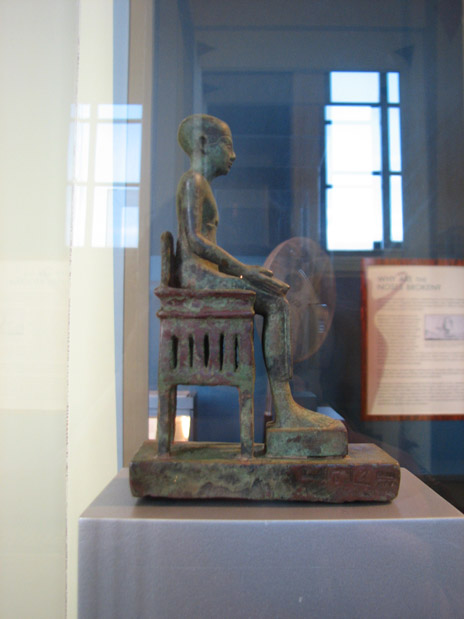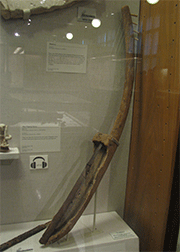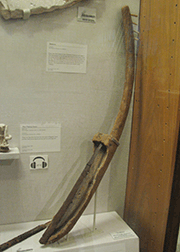
"Photoshop Skills" Salvage a Photo

|
Photographing things in museums is often a tricky thing, because all the necessary glass cases allow many disturbing reflections to mar the image. But through Photoshop, (and before I laid out the 700 bucks for this image editor, I used a cheaper editor), the photos can be salvaged. Imhotep was rather lost in all the reflections (and too much background), as you can see below:
 We see large windows, with lots of light.... and a big sign and is there something else here???
"Imhotep, an official of King Djoser in Dynasty 3, supervised the construction of the earliest known monumental stone structure, the Step Pyramid. "Over many centuries, ancient Egyptian reverence for Imhotep's wisdom grew until, by the Late Period, he was worshiped as a god. Images of the divine Imhotep show him dressed as an official. This statuette, from more than two thousand years after Imhotep's time, depicts him seated and holding a papyrus scroll."(I have another view of him for the click-through.
  Ancient Egyptian Harp at Chicago's Oriental Museum, before and after
On Photographing Art It is interesting to learn even the pros sometimes have trouble photographing art. MOMA experts tell of reflection troubles in photographing a beautifully simple piece. "A recent encounter with our imaging studio revealed the bronze The Newborn to be an imp of trickery and confusion for the camera, and an interesting challenge for our imaging team." Brancusi's piece will appear in an exhibition catalog for a show that is coming to Atlanta. "The final image (#3 in the triptych below), which contains components from approximately 10 different captures, creates a sense of equilibrium that is unattainable through straight photography, due to the laws of nature and light and the fixed perspective of the camera’s eye. In the end, we think Jonathan made the sculpture appear absolutely natural—just what you would see if you happened upon it in our galleries." It takes a lot of work to get that "absolutely natural" appearance! |